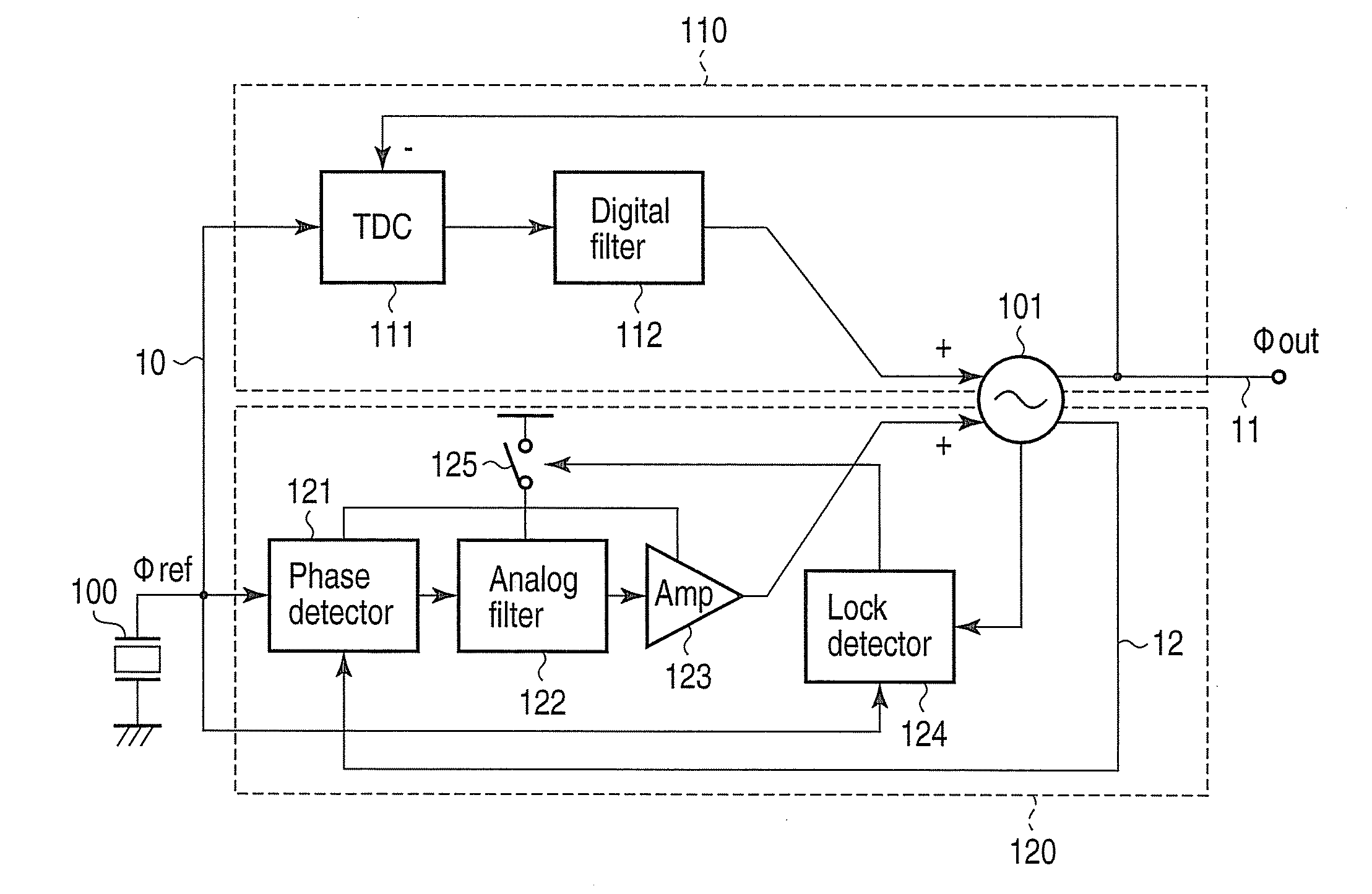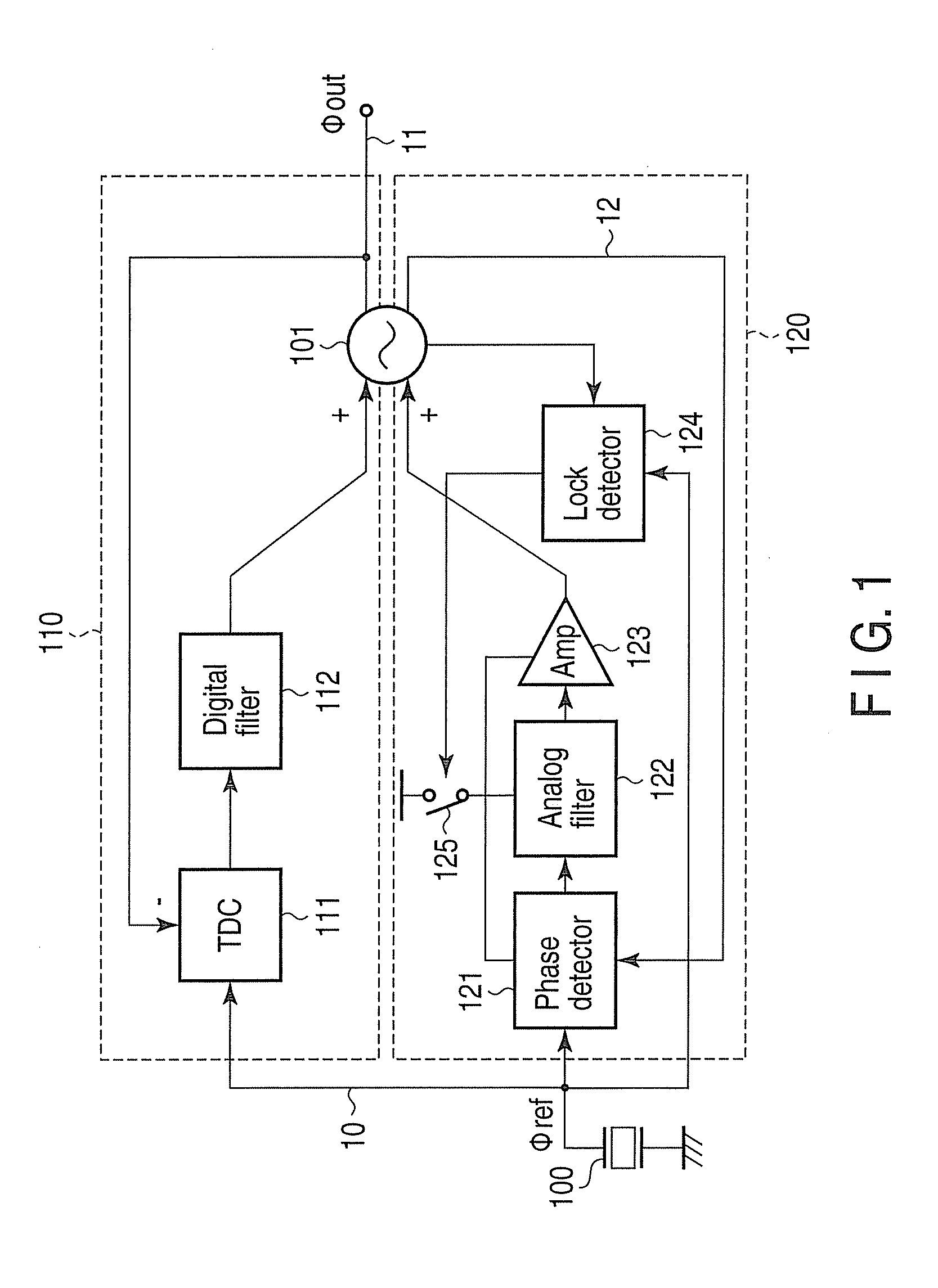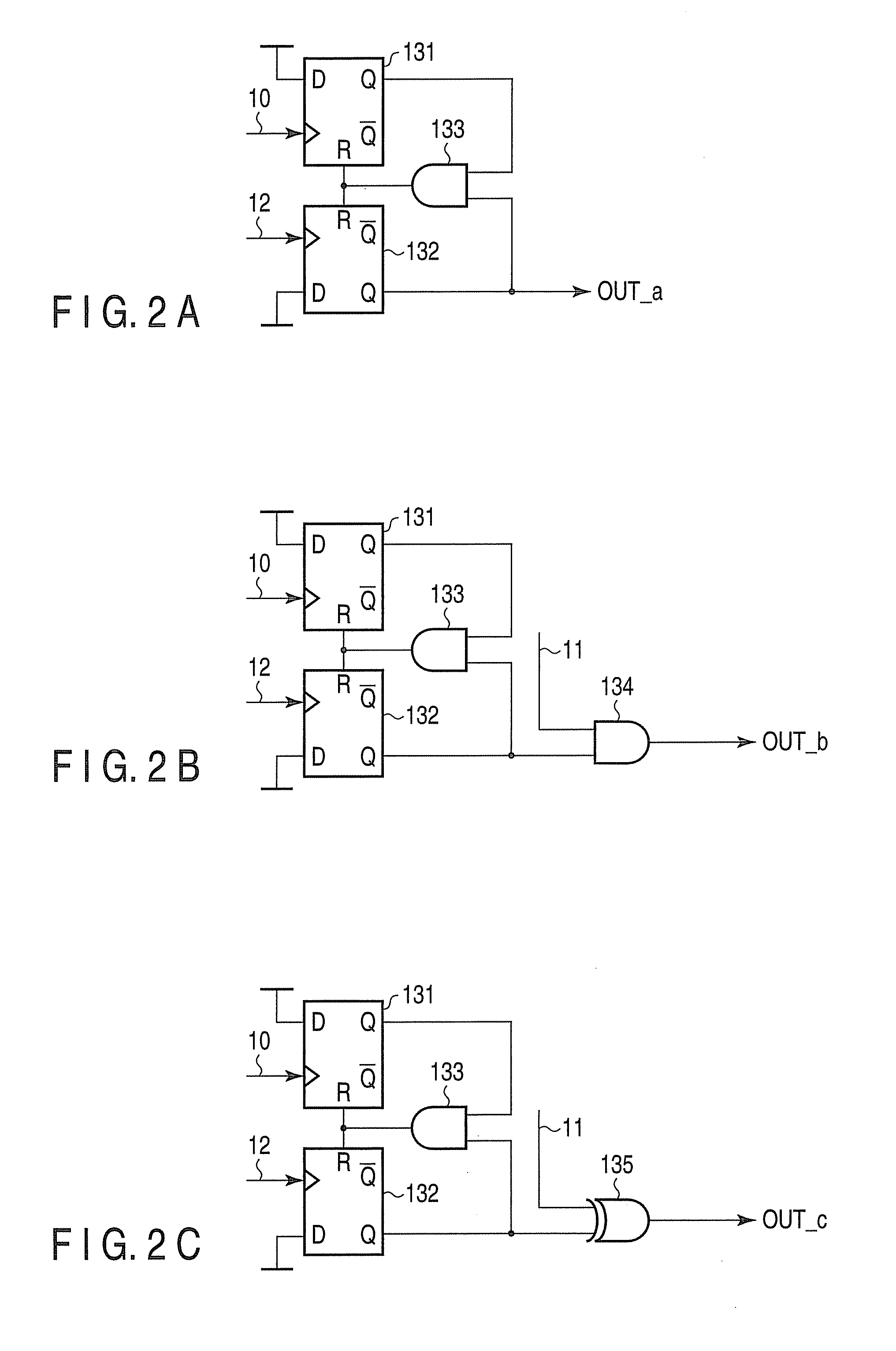Phase synchronization circuit and receiver having the same
a phase synchronization circuit and receiver technology, applied in the direction of digital transmission, pulse automatic control, electrical equipment, etc., can solve the problems of reducing the phase-noise characteristic of the entire pll, and tdc generating quantization nois
- Summary
- Abstract
- Description
- Claims
- Application Information
AI Technical Summary
Benefits of technology
Problems solved by technology
Method used
Image
Examples
first embodiment
[0054]As FIG. 1 shows, a phase synchronization circuit according to a first embodiment of the invention has a reference signal generator 100, a controlled oscillator 101, a TDC 111, a digital filter 112, a phase detector 121, an analog filter 122, an amplifier 123, a lock detector 124, and a switch 125.
[0055]In the phase synchronization circuit of FIG. 1, the controlled oscillator 101, TDC 111 and digital filter 112 constitute a digital loop 110. The controlled oscillator 101, phase detector 121, analog filter 122 and amplifier 123 constitute an analog loop 120. The digital loop 110 locks the frequency and phase of the output signal of the controlled oscillator 101 to the frequency and phase of the reference signal generated by the reference signal generator 100. Then the analog loop 120 suppresses the phase noise generated in the controlled oscillator 101.
[0056]The reference signal generator 100 is, for example, a crystal oscillator, and generates a reference signal 10. The referen...
second embodiment
[0098]As seen from FIG. 14, a phase synchronization circuit according to a second embodiment of this invention differs from the circuit of FIG. 1, in that a VCO 201 and a digital loop 210 replace the controlled oscillator 101 and the digital loop 110, respectively. In FIG. 14, the components identical to those shown in FIG. 1 are designated by the same reference numbers. The components characterizing the second embodiment will be described in the main.
[0099]In the digital loop 210 that corresponds to the digital loop 110 shown in FIG. 1, a digital-to-analog converter (DAC) 213 is connected to the output of the digital filter 112. The DAC 213 receives a digital output signal from the digital filter 112 and converts the same to an analog signal. The analog signal is input, as the first signal, to the VCO 201.
[0100]The VCO 201 is constituted by a ring oscillator comprising a plurality of inverting amplifiers that are circularly connected in cascade. The VCO 201 receives the first contr...
third embodiment
[0102]As seen from FIG. 15, a phase synchronization circuit according to a third embodiment of this invention differs from the circuit of FIG. 1, in that a controlled oscillator 301, a differential to single-phase converter 302 and a phase shifter 303 replace the controlled oscillator 101. In FIG. 15, the components identical to those shown in FIG. 1 are designated by the same reference numbers. The components characterizing the third embodiment will be described in the main.
[0103]The controlled oscillator 301 is an LC oscillator that includes variable capacitors and generates less noise than the VCO 201 described above. In the controlled oscillator 301, the first control signal input from the digital filter 112 to the first control terminal discretely controls the variable capacitors in terms of capacitance. The second control signal input from the amplifier 123 to the second control terminal also controls capacitances of the variable capacitors. Thus, the controlled oscillator 301...
PUM
 Login to View More
Login to View More Abstract
Description
Claims
Application Information
 Login to View More
Login to View More - R&D
- Intellectual Property
- Life Sciences
- Materials
- Tech Scout
- Unparalleled Data Quality
- Higher Quality Content
- 60% Fewer Hallucinations
Browse by: Latest US Patents, China's latest patents, Technical Efficacy Thesaurus, Application Domain, Technology Topic, Popular Technical Reports.
© 2025 PatSnap. All rights reserved.Legal|Privacy policy|Modern Slavery Act Transparency Statement|Sitemap|About US| Contact US: help@patsnap.com



